今天讲一下EE项目,特别是在微电子集成电路分支有代表性的项目。因为EE分支非常多,超过十几个,所以项目的差别性按照分支来分类。今天集中讲“系统控制”和“嵌入式”分支。
一。System and Control 系统控制分支
(机器人的领域除了人工智能和machine learning以外,就是EE当中的系统控制)
1.1:Technical University of Denmark 丹麦技术大学(DTU):ELECTRICAL ENGINEERING QS排名116;
专业:Electronic Engineering MSc,系统控制只是其中一个分支
http://www.dtu.dk/english/education/msc/programmes/electrical_engineering
1.1.1 Specializations分支分类
The MSc programme in Electrical Engineering allows you to specialize in one of the five study lines:
1.1. 2 课程设置:Electrical Engineering (MSc) - DTU
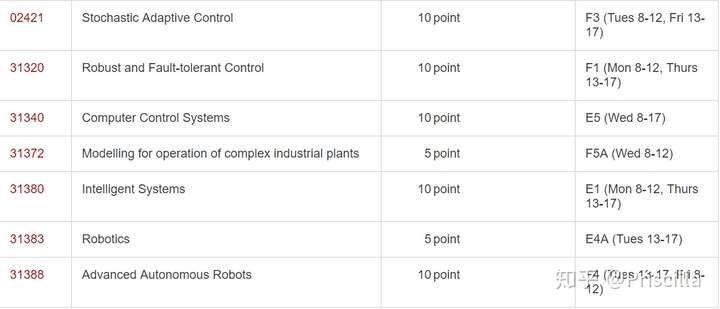
选修课的部分:

1.1.3 DTU其他的几个分支为:
Acoustics is a wide field that includes topics such as human perception of sound and auditory modelling, electroacoustic systems and audio coding, architectural acoustics, sound fields and vibration, and advanced acoustic measurement techniques.
1.1.4 DTU的EE录取背景要求:必须本身本科是EE本科或者相关专业(比如机械工程,CS等等)而你的本科成绩单需要有数学和物理的成绩,电子学和电磁技术等等这些EE本身的基础课。
International students国际学生
Applicants to DTU’s MSc programme in Electrical Engineering must have completed a BSc in Electrical Engineering or another relevant course of study. Applicants should possess good qualifications in basic mathematics and physics as well as in electrical, electronic and electromagnetic technology. It is also recommended that applicants are acquainted with signal processing, programming and control. It is also important have experience with theoretical and experimental work.
Other applicants must be able to document that they possess corresponding qualifications and will be assessed individually.
1. 2:Chalmers University of Technology 瑞典查尔姆斯理工大学:QS排名133
查尔姆斯理工大学对于EE的分支不是一个整体的EE项目有不同的分支,而是成为“分支即是专业”这在理工大学会出现的非常明显,因为纯理工院校的师资和研究资源更加偏向其中几个分支,因此比较强势的几个分支都有自己的独立的项目。这个项目是强调控制系统设计的,但是要和另外单独的嵌入式项目作区别,两个其实有交叉,但是并不完全是一回事,因为嵌入式和计算机CS打交道非常多,属于芯片的集成电路设计,但是控制系统可以涉及到很多方面,比如智能小车的控制系统,机器人的躲避障碍物系统,循迹小车的控制系统设计等等。
The aim of the programme is to prepare you for a professional career by providing a broad systems engineering base, suited to the engineering of complex, computer-controlled (embedded) products and systems. The programme also offers course packages towards subtopics (e.g. control; automation; mechatronics), and/or fields of application. Applications span a wide spectrum, from small consumer devices and medical equipment to large systems for process and production control.
1.3: KTH Royal Institute of Technology in Stockholm 皇家理工学院(KTH):QS排名98;
EE在KTH上面是非常的强,所以涉及到的领域也很广,其中系统与控制项目是偏向机器人学的。
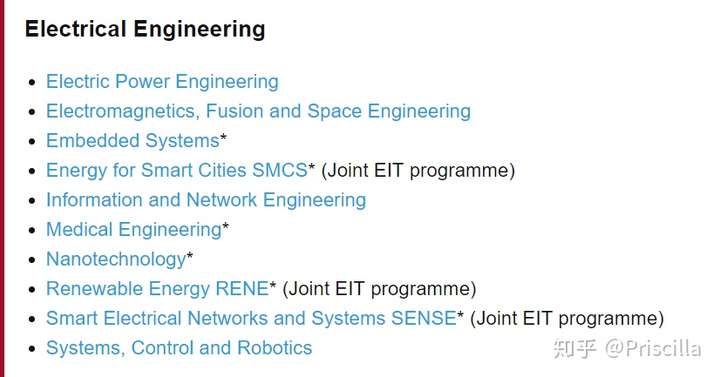
1.3.1 专业名称Master's programme in Systems, Control and Robotics: Master's programme in Systems, Control and Robotics
KTH的系统与控制项目是独立的项目,不是EE整体项目的分支,因此自己还有具体的分支:Programme tracks,但是这些分支就非常细化了,就一般选择的时候学生背景差别不会大,而主要看兴趣点了,这一点在动机信当中和职业规划联系在一起。
Robotics and autonomous systems机器人学和自动系统: This track is intended for students that are interested in autonomous systems. This track has a somewhat broader scope and also looks, for example, at sensing and perception in addition to control.
Networked control systems网络化控制系统: The track is intended for students who are interested in future industrial or academic careers within the area of networked control systems. Examples of these systems include, among others, autonomous agents and vehicles, smart electricity grids, smart buildings and factories, and communication networks.
Systems and control theory系统和控制理论: This track provides a strong theoretical basis for a future industrial or academic career in complex system design and analysis.
Electric energy systems电力系统: This track is intended for students who are interested in systems and control with applications to electric power systems and electrical machines.
1.4 Technische Universiteit Delft 代尔夫特理工大学 (TUD):Master of Science Electrical Engineering, Track: Signals & Systems QS排名54;学校卡211
1.4.1 专业名称: Master of Science Electrical Engineering, Track: Signals & Systems
TUD的系统分支和一般的控制系统不太一样,融合了信号处理的领域,而EE当中信号处理是单独的一个领域,叫做signal processing,而这个项目是融合了两者。所以有信号处理项目的背景和系统背景的都可以申请TUD这个项目,而一般其他学校当中信号的领域有些会出现在communication或者information当中。
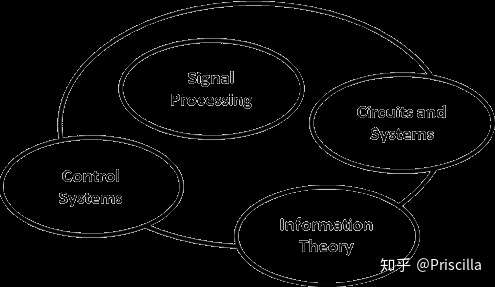
1.4.2 课程设置:

但是有些学信号的同学会吐槽这个项目,因为课程里面信号处理和控制系统融合在一起。
1.5 Technische Universiteit Eindhoven (TUE):Electrical Engineering,QS排名104;
1.5.1 专业名称:Master's Program Systems and Control
Master's Program Systems and Control
分支领域:
Research groups Electrical Engineering EE旗下的两个分支:
Electromechanics and Power Electronics (EPE)
Control Systems (CS)
其中控制系统的项目组的研究课题主要在下面的领域:
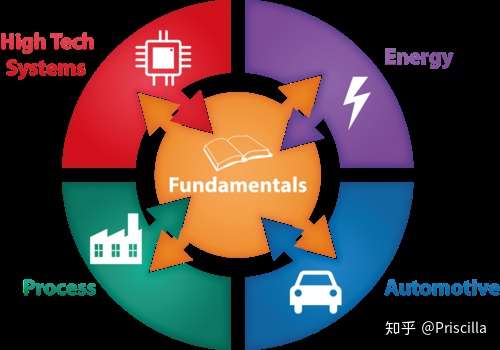
1.5.2课程设置:
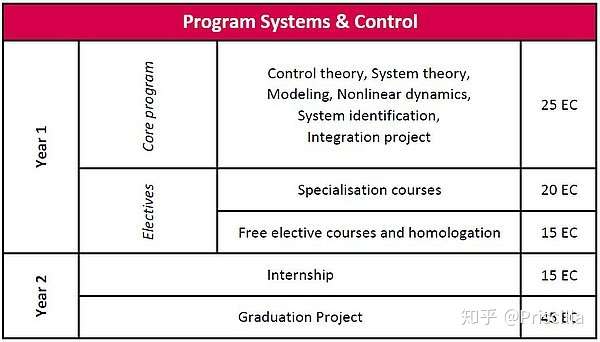
——————————————我是不同两个领域的分割线—————————————
二。嵌入式项目:
一般来说嵌入式现在都没有分支了,而都是不同学校的独立的项目
2.1 Chalmers University of Technology 瑞典查尔姆斯理工大学:QS排名133
Embedded Electronic System Design
2.1.1 课程设置:选修课的宽泛程度每个学校不一样,而每个课程的课程描述学校都在官网上面有,详细课程描述建议上上面的链接自己看
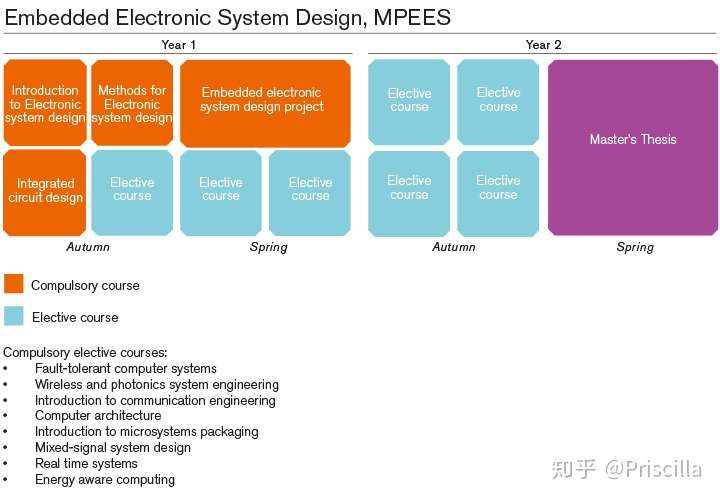
2.1.2 录取背景要求:
Entry requirements (academic year 2018/19)
General entry requirements 整体项目的基础要求:必须是理工科出身
To be eligible an applicant must either be a holder of a Bachelor's degree in Science/Engineering/Technology/Architecture or be enrolled in his/her last year of studies leading to such a degree.
Specific entry requirements 项目的特殊学分先修课要求:
Bachelor's degree (or the equivalent) with a Digital Design profile and a Major in Electrical Engineering, Computer Engineering, Telecommunication Engineering, Automation and Mechatronics Engineering, Engineering Physics or the equivalent
本科必须是电气工程EE,计算机工程CE,通信工程,自动化,机械工程,机电工程,物理专业等等相关性强的。
Prerequisites: Mathematics (at least 30cr.) (including Linear Algebra, Calculus, Differential Equations and Transform theory), Electronic and computer fundamentals (including Electric circuit theory, Electronics, Digital Fundamentals, Digital system design using VHDL/Verilog, Computer organization), Basic Programming, Signals and Systems (including Control and Filter fundamentals) 必须有30个学分的数学课程,包括线性代数,微积分,微分方程和变换理论),电子和计算机基础(包括电路理论,电子学,数字基础,使用VHDL / Verilog的数字系统设计,计算机组织),基本编程,信号和系统 和Filter基础)30个学分,一个也不能少,而欧洲ECT的学分转换方式和国内是1:1或者1:1.5,或者1:1.75, 每个学校不一样,要看两个学校总体学分的比例
Preferable course experience: Advanced computer organization, Electrical measurements, Semiconductor devices or Microelectronics and Programming (C/C++) 有较好的课程经验:先进的计算机组织,电气测量,半导体设备或微电子学和编程(C / C ++)
2.2 KTH Royal Institute of Technology in Stockholm 皇家理工学院(KTH):QS排名98;
专业名称Master's programme in Embedded Systems 1月15日截止日期
Embedded Systems at KTH
同样,因为KTH的嵌入式已经是单独项目,因此涵盖的四个分支从申请的兴趣走,大家的软性背景项目不会有什么明显的差别。
The programme offers four tracks:
The Embedded Electronics track addresses the problems of integrating sensors and communication devices into SoC/ASIC and PCB-based embedded systems, with a focus on the Internet of things.嵌入式电子学轨道解决了将传感器和通信设备集成到基于SoC / ASIC和PCB的嵌入式系统中的问题,重点放在物联网上。
The Embedded Platforms track addresses the problems of designing and assembling an embedded single-/multi-/many-core CPU platform, including embedded softwareEmbedded Platforms跟踪解决了嵌入式单/多/多核CPU平台(包括嵌入式软件)的设计和组装问题。
The Embedded Software track addresses the problems of designing and maintaining embedded software running on single-/multi-/many-core systems, including computer hardware fundamentals.嵌入式软件跟踪解决了设计和维护在单/多/多核系统上运行的嵌入式软件的问题,包括计算机硬件基础知识。
The Embedded Control track addresses the problems of designing electronics/embedded systems that are closely integrated with mechanical systems.嵌入式控制轨道解决了与机械系统紧密集成的电子/嵌入式系统设计问题。
2.3 Technische Universiteit Delft 代尔夫特理工大学 (TUD):Master of Science Electrical Engineering, Track: Signals & Systems QS排名54;
2.3.1 专业名称:MSc Embedded Systems 学校卡211
关于软件和硬件,嵌入式究竟在CS,CE还是EE当中哪个范畴,TUD的项目有一个融合的解释。

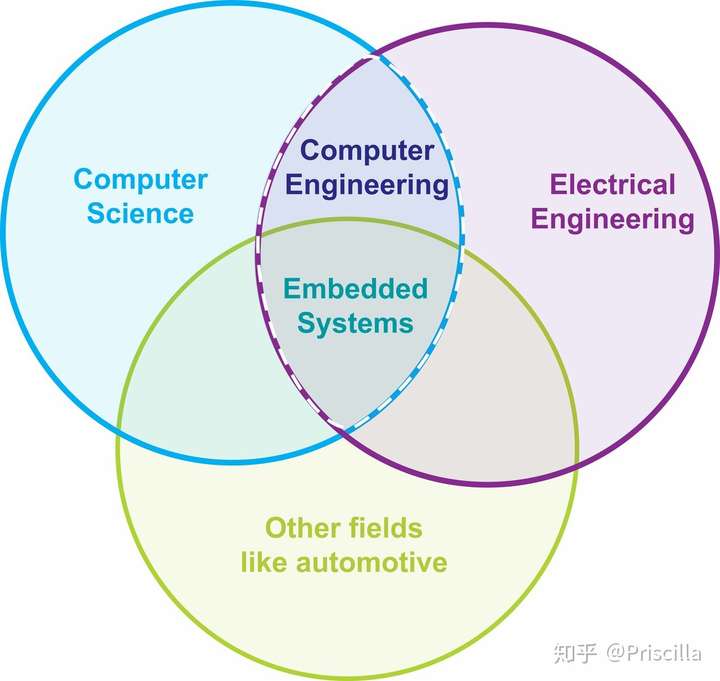
2.4 Technische Universiteit Eindhoven (TUE):Electrical Engineering,QS排名104;
2.4.1 专业名称:Embedded Systems Embedded Systems
结业的项目可以看一下,是否符合自己的兴趣:
今天讲述EE的两个分支领域到此,后面会出现信号处理,纳米技术,电力技术的分支分享。EE因为分支非常广,且部分领域知识和CS计算机CE计算机工程相交错,所以在申请的时候一定要重点看自己的软性背景项目更加偏向哪个分支领域,不要选错了领域,匹配度就下来了。
Priscilla
代尔夫特,荷兰
2018/6/8